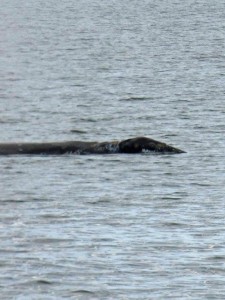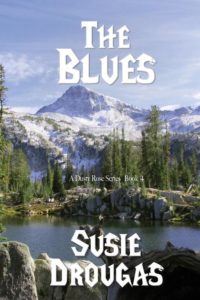
Photo courtesy of Frank Alishio. Taken from boat on south side of Camano Island, WA.
It’s whale watching time! Each year from March throughout the summer months, the fascination of whale watching begins in Puget Sound.
So where can you spot these gigantic mammals? The gray, a baleen whale, is regularly spotted in the Saratoga Passage and other shallow, muddy beaches around Camano Island. Another baleen whale, the minke, also is seen in Puget Sound.
Baleen whales are identified by horny, elastic material that forms a fringed mesh in their mouth, used for trapping food.
The orca, a toothed whale, is most commonly seen in the waters of the San Juan Islands. One popular place on San Juan Island is Lime Kiln State Park, just 8 miles from Friday Harbor overlooking Haro Strait. This day-use park is the nation’s first whale-watching park.
Orcas, also known as “killer” whales because of their voracious appetite for salmon, porpoise, or even whales, reside in Puget Sound year round but sightings are more common beginning in March.
The orca is not really a whale at all but is the largest member of the dolphin family. However, it is commonly called a whale because of its size and habits. The distinctive black and white orcas are probably the most studied group of marine mammals in the world.
Gray whales, once nearly extinct, have made a remarkable comeback and can be seen making their north-bound migration from March through June. These giants can reach 45 feet in length, compared to the orcas’ 30 feet, and gray whales have a blotchy pattern of light and dark gray coloration.
It is estimated that gray whales consume about seven percent of their body weight each day. Grays feed primarily on bottom-dwelling amphipods (shrimp like animals), clams and worms, and suck up several cubic feet of sediment at a time, filtering it through their baleen plates. They are often seen surfacing with mud streaming from their heads.
The minke whale ranges between 25 and 30 feet long and has dark coloring on its back and small dorsal fin. Because of their coloring, minke whales are often mistaken for female orca. One distinction between them is that the minke travels alone, unlike the female orca who normally travel in groups. Minke whales come to the Puget Sound area during summer time and return to the Pacific Ocean in winter.
What do you watch for when on the lookout for whales? Whether you’re on shore or on a boat, watch for the whale’s blow which consists of vapor, water, or condensation blown into the air up to 12 feet when the whale exhales. Once a blow is located, keep watching. Where you’ve seen one, you’ll see others.
Whales breathe rhythmically and normally follow a pattern of three to five shallow dives in a row followed by a deep dive, to a depth of up to 500 feet. When you see tail flukes come out of the water, it usually means a whale is starting a deep dive. The Orca may stay submerged 3 to 5 minutes while the gray and minke may not surface for 8 to 15 minutes. When whales surface, they blow.
Sometimes whales lift their heads straight out of the water, a maneuver called spyhopping. Some whale experts believe this activity allows the animal to visually find out where it is in relationship to the shoreline.
Another thrilling sight is breaching, when a whale leaps into the air exposing up to three fourths of its body length. The whale then falls on its side or back with a tremendous splash. Whales will sometimes breach several times in a row.
If you’re fortunate enough to be near waters where whales are passing through, enjoy the show. Whale watching is one of the Northwest’s splashiest spectacles.
These giant mammals will give you a show to remember.
For more information on whales, visit www.WhaleResearch.com




